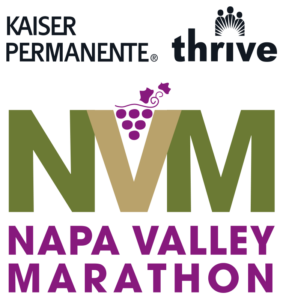
Advice for Cold Weather Running
By Courtney Dawley, DO, Kaiser Permanente
As we head into the colder months, it is important to adjust our fitness habits to remain healthy and safe. This is especially true for runners who may be starting winter race training. Winter poses different challenges: Shorter days, longer nights and varying weather.
For some people, it is more difficult to find motivation to persevere through rain and colder temperatures. For others, it is easier to run when it’s cooler than when it’s hot. Planning ahead can help runners stay on track toward race goals and keep safe.
During winter, you must be mindful of keeping your gear – phone, feet, socks – dry. In our area, traction is not much of a concern as there is no snow and very little ice. Warmer socks can help. Trail shoes may also be warmer and sturdier.
You also want to ensure that you are not over or underdressed. Dress warmly with removable layers. You should be warm at the start and then remove layers as needed. It is easier to take layers off than to get cold and have nothing to put on. Gloves and ear warmers are essential in colder temperatures.
It’s not only colder in winter, it gets darker much earlier. If your routine includes going for a run after work when it’s already dark, be sure to follow a well-lit route and use reflective gear. It’s a good idea to wear some type of light for complete visibility. I would suggest you wear a headlamp or carry a flashlight.
Don’t forget to hydrate. You may feel thirstier when it’s hot outside, but you also need to hydrate when it’s cool out. The amount of hydration needed depends on the distance you are running. For shorter distances of less than three miles, you may not need to carry hydration with you. However, be sure to re-hydrate post run. For longer runs, you can carry a small bottle of water or electrolyte fluid.
Before you run, consider some dynamic stretching like leg lifts, side lunges, as well as hip and foot flexor stretches to prepare your body.
Afterwards, change into dry clothes and don’t skip your cooldown. You have worked hard and this can help you recover.
Perhaps running is part of your New Year’s resolution. If you are a first-time runner, remember it’s not about being fast. It is about moving and heading towards a goal of self-improvement. Starting off, it is a good idea to implement a run/walk strategy: run four minutes and then walk one minute. This will help build up your endurance. Also, do not increase your weekly mileage by more than 10% every week. To help build motivation, register for a race, so you have a training goal. Find a running partner or team. Set a mileage goal. It could be weekly, monthly, or certain miles by a certain date. These will help hold you accountable.
The good news here is that there is plenty of opportunity to use your gear and training. There are several races scheduled during the winter, spring and fall. In our area, the Napa Valley Marathon is coming up in May. But whatever distance you choose, congratulations for planning for your fitness goals.

